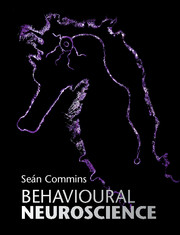Book contents
- Behavioural Neuroscience
- Behavioural Neuroscience
- Copyright page
- Dedication
- Contents
- Preface
- Acknowledgements
- 1 Neurons and Neural Communication
- 2 An Introduction to the Brain
- 3 Neuroscientific Methods
- 4 Examination of Animal Behaviour: General Principles and Techniques
- 5 Habituation and Sensitisation in the Aplysia
- 6 Classical Conditioning in the Aplysia
- 7 Long-Term Synaptic Plasticity in Mammals I: Long-Term Potentiation (LTP)
- 8 Long-Term Synaptic Plasticity in Mammals II: Long-Term Depression (LTD)
- 9 Eye-Blink Conditioning
- 10 Fear Conditioning
- 11 Taste Aversion
- 12 Sound Localisation
- 13 Bat Echolocation
- 14 Spatial Navigation
- 15 Birdsong Learning
- 16 Circadian Rhythms
- Index
- References
15 - Birdsong Learning
Published online by Cambridge University Press: 22 March 2018
- Behavioural Neuroscience
- Behavioural Neuroscience
- Copyright page
- Dedication
- Contents
- Preface
- Acknowledgements
- 1 Neurons and Neural Communication
- 2 An Introduction to the Brain
- 3 Neuroscientific Methods
- 4 Examination of Animal Behaviour: General Principles and Techniques
- 5 Habituation and Sensitisation in the Aplysia
- 6 Classical Conditioning in the Aplysia
- 7 Long-Term Synaptic Plasticity in Mammals I: Long-Term Potentiation (LTP)
- 8 Long-Term Synaptic Plasticity in Mammals II: Long-Term Depression (LTD)
- 9 Eye-Blink Conditioning
- 10 Fear Conditioning
- 11 Taste Aversion
- 12 Sound Localisation
- 13 Bat Echolocation
- 14 Spatial Navigation
- 15 Birdsong Learning
- 16 Circadian Rhythms
- Index
- References
- Type
- Chapter
- Information
- Behavioural Neuroscience , pp. 185 - 198Publisher: Cambridge University PressPrint publication year: 2018

